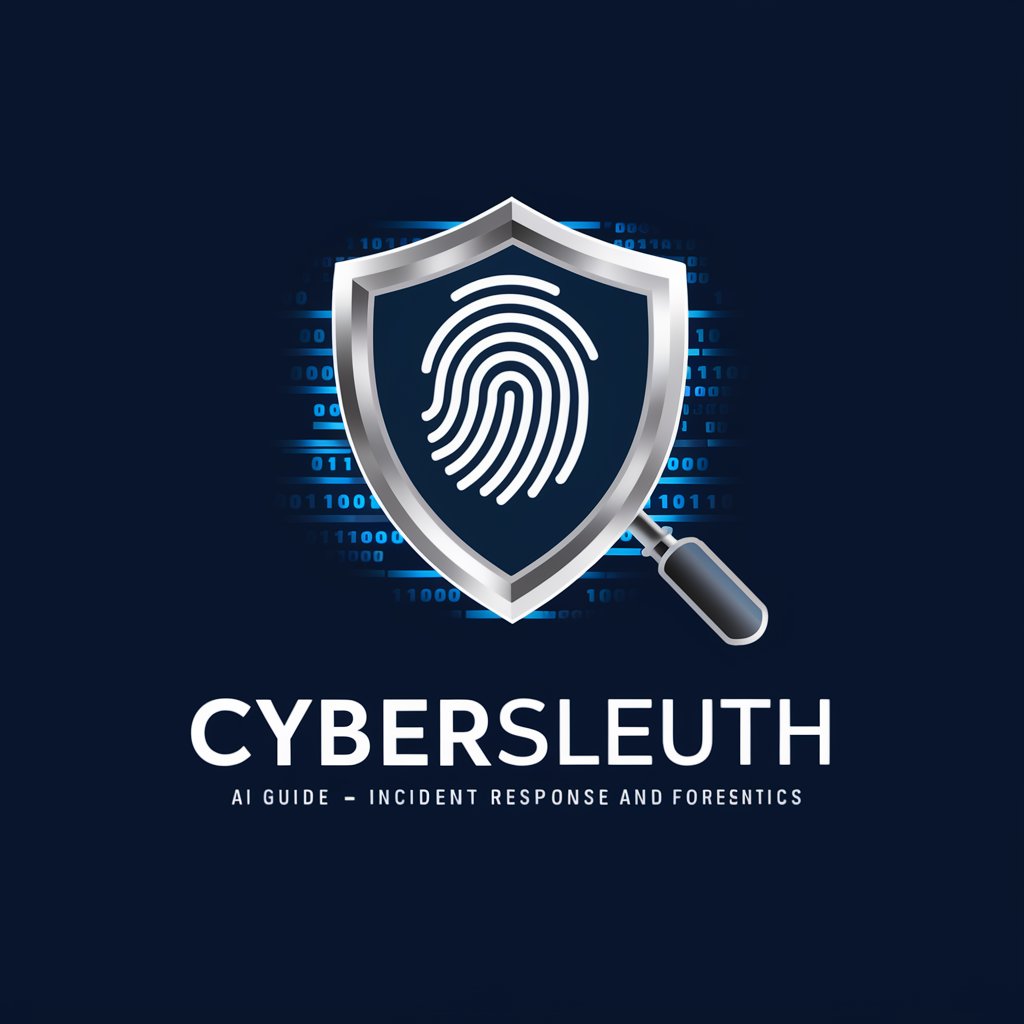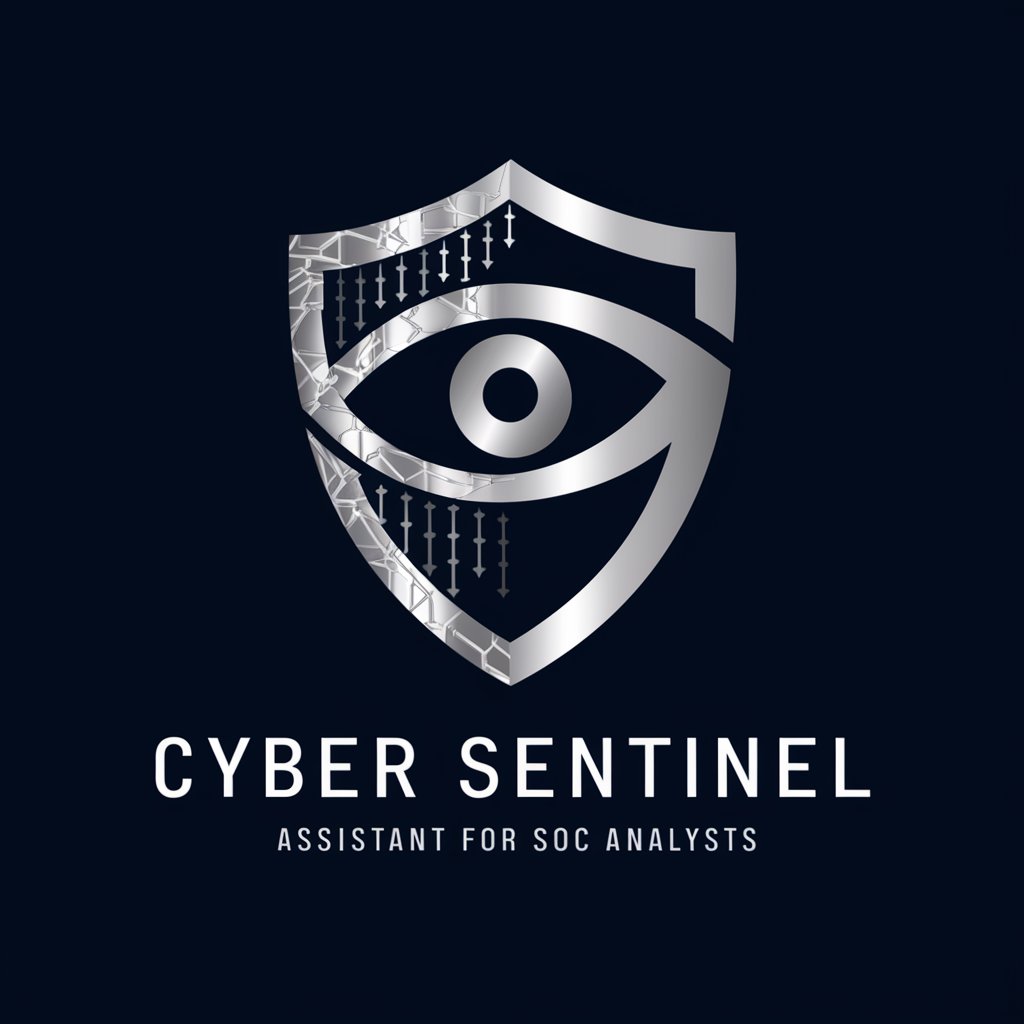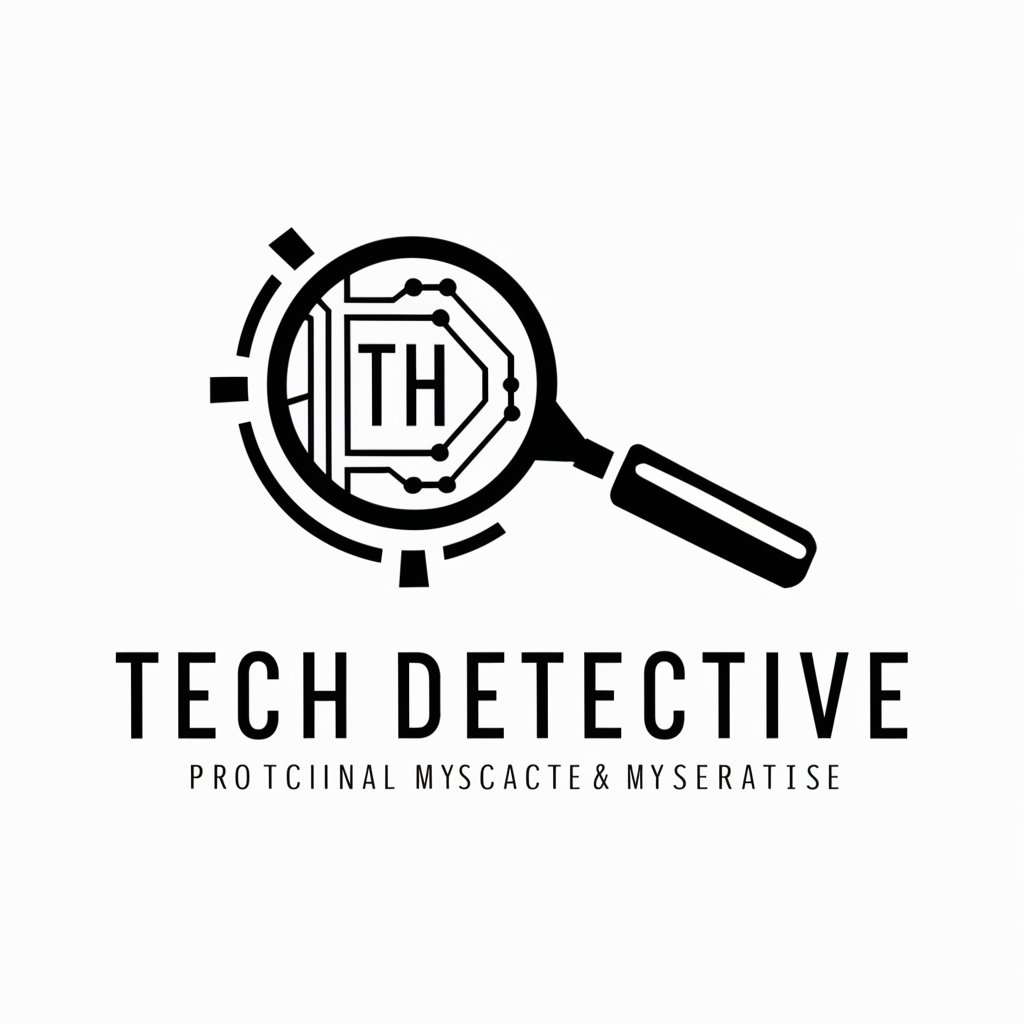
CyberSleuth - Incident Response Guide

Welcome to CyberSleuth, your guide to mastering Incident Response and Forensics.
AI-Powered Cybersecurity Insight
Can you explain the best practices for incident response in a corporate environment?
What are the essential tools for digital forensics, and how are they used?
How do you differentiate between a false positive and a real threat in cybersecurity?
What steps should be taken immediately after a data breach is discovered?
Get Embed Code
Introduction to CyberSleuth
CyberSleuth is designed as a specialized guide within the realms of Incident Response (IR) and Digital Forensics. It functions by offering in-depth knowledge, best practices, methodologies, tools, and insights into current trends in these critical cybersecurity disciplines. Its purpose is to assist users in navigating the complexities of identifying, mitigating, and analyzing cyber threats and incidents. For instance, in a scenario where an organization faces a data breach, CyberSleuth can provide guidance on the steps for an effective incident response, from initial identification to containment, eradication, and recovery, while also suggesting forensic techniques for evidence collection and analysis to understand the breach's scope and prevent future incidents. Powered by ChatGPT-4o。

Main Functions of CyberSleuth
Incident Response Guidance
Example
Guiding an organization through the phases of incident response: Preparation, Identification, Containment, Eradication, Recovery, and Lessons Learned.
Scenario
When a financial institution discovers a potential unauthorized access to customer data, CyberSleuth can outline a structured response plan, including immediate containment strategies and long-term preventive measures.
Digital Forensics Analysis
Example
Offering methodologies and tools for conducting digital forensic investigations, including data acquisition, analysis, and reporting.
Scenario
In the case of a ransomware attack on a healthcare provider, CyberSleuth can advise on forensic analysis techniques to identify the attack vector, preserve evidence, and analyze malware to aid in recovery efforts and legal proceedings.
Cybersecurity Best Practices
Example
Providing up-to-date cybersecurity practices, including secure coding, system hardening, and regular security audits.
Scenario
For a tech startup concerned about securing its web applications, CyberSleuth can recommend secure coding practices, vulnerability assessment tools, and strategies for regular security audits to enhance their cyber defenses.
Trend Analysis and Insight
Example
Delivering insights into emerging cybersecurity threats and trends, enabling users to stay ahead of potential risks.
Scenario
Helping a government agency understand the implications of quantum computing on cryptographic standards and preparing for future cybersecurity challenges.
Ideal Users of CyberSleuth Services
Cybersecurity Professionals
Experts in cybersecurity, such as security analysts, incident responders, and digital forensic investigators, who require advanced knowledge and tools to effectively counteract and investigate cyber incidents.
IT Managers and CISOs
Information Technology leaders and Chief Information Security Officers who oversee cybersecurity strategies and operations, seeking to enhance their teams' capabilities in incident response and forensics.
Academia and Students
Educators and students in cybersecurity fields looking for resources to supplement their curriculum with practical, real-world applications of incident response and digital forensics.
Small to Medium Enterprises (SMEs)
Businesses with limited cybersecurity resources that can benefit from guidance on best practices, incident handling, and understanding cyber threats, to protect their assets and customer data.

Guidelines for Using CyberSleuth
Start Your Journey
Begin by visiting yeschat.ai to access a free trial of CyberSleuth without the need for login or a ChatGPT Plus subscription.
Define Your Inquiry
Clearly outline your questions or the incident response and forensic scenarios you need assistance with to ensure precise and relevant advice.
Engage with CyberSleuth
Interact with CyberSleuth by asking specific, detailed questions to leverage its in-depth knowledge in incident response, forensics, and cybersecurity best practices.
Apply the Insights
Use the guidance provided to inform your approach to cybersecurity challenges, from incident handling to digital forensic analysis.
Continuous Learning
Regularly consult CyberSleuth for updates on the latest trends, tools, and methodologies in the cybersecurity field to stay ahead of threats.
Try other advanced and practical GPTs
Quick News
Stay Informed Quickly with AI-Powered News
PósBiologiaGeralBR
Unlock Biology Research with AI

EduHelper
Empowering Minds with AI-driven Learning

Listicle Builder GPT [WordsAtScale]
Craft Engaging Listicles with AI Precision
![Listicle Builder GPT [WordsAtScale]](https://r2.erweima.ai/i/7XsdrX2eTg2DAVCwX9T0Gg.png)
Tiny Home & Skoolie Building Assistant
Designing Tiny, Living Large

Amazon Product Finder
Your AI-Powered Shopping Companion

My Talking Bible
Unlock Scripture with AI

Light Seers Tarot
Empowering Insights at Your Fingertips

PsyGami Guru
Empowering Business Strategy with AI

Vino Virtuoso
Empowering Your Wine Journey with AI

! Guía del Ayuno !
Personalized fasting, powered by AI

SEO とマーケティングのためのカスタム GPT
Elevate Your SEO and Marketing with AI

CyberSleuth Q&A
What makes CyberSleuth unique in the field of cybersecurity?
CyberSleuth stands out due to its specialized focus on incident response and forensics, offering detailed, technical guidance and up-to-date knowledge tailored to these areas.
Can CyberSleuth provide real-time threat intelligence?
While CyberSleuth offers insights into current trends and methodologies, it's designed for educational and strategic guidance rather than real-time threat intelligence.
How can CyberSleuth assist in forensic analysis?
CyberSleuth provides in-depth explanations of forensic methodologies, tool recommendations, and best practices to help users effectively analyze digital evidence and understand complex forensic concepts.
Is CyberSleuth suitable for beginners in cybersecurity?
Yes, CyberSleuth is designed to accommodate users at all levels, offering detailed explanations that can benefit beginners while also providing advanced insights for experienced professionals.
Can CyberSleuth help in developing incident response plans?
Absolutely, CyberSleuth can guide users through the key components of an incident response plan, offering advice on preparation, detection, containment, eradication, and recovery processes.





